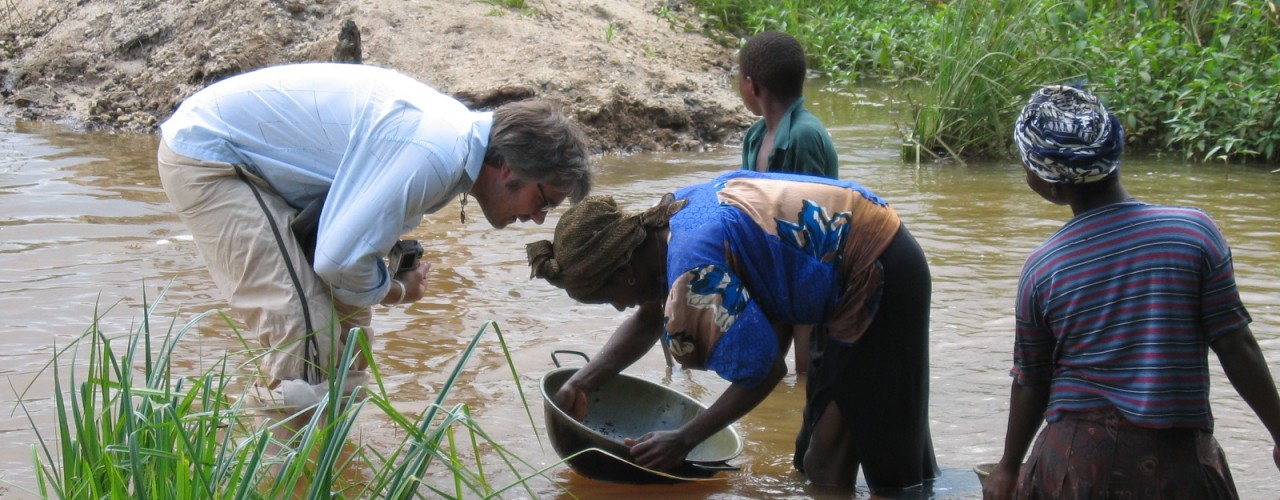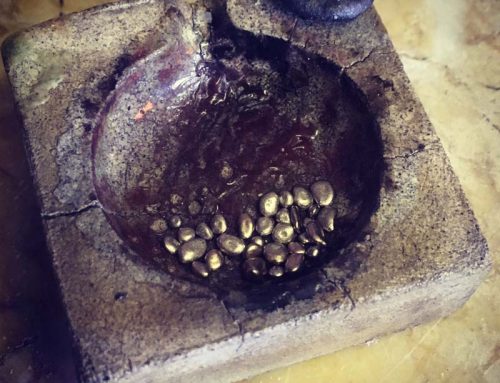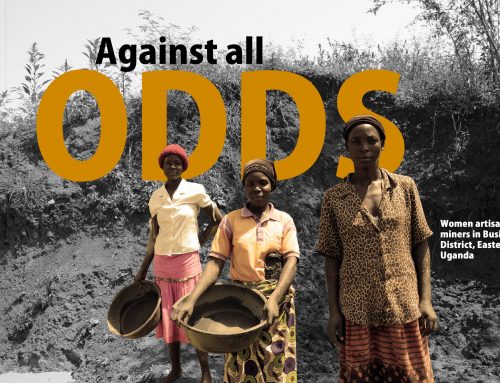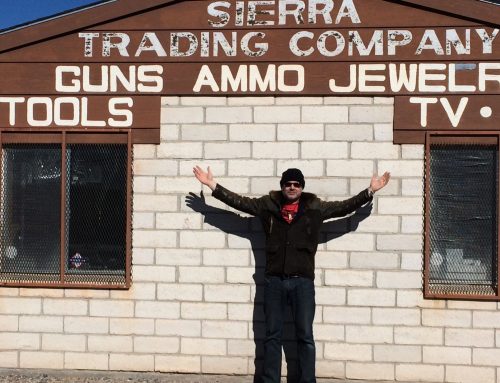12 months on from the launch of Certified Fairtrade Gold, I thought I would contact 3 of the UK’s leading ethical jewellery companies and find out what impact if any the launch of Fairtrade has meant for their business. So I went to the horses’ mouth and asked Alan Frampton from CRED Jewellery, the designer Jon Dibben and Vivien Johnston from Fifi Bijoux to give me their honest appraisal.
CRED Jewellery
If people knew just how much harm was happening to artisanal miners all over the world they would never buy normal gold. Health and safety, child labour, poor environmental practice and poverty are perpetuated by a corrupt system of control by bullion buyers. Where Fairtrade has been the answer to bringing justice to the fresh produce industry, so it is doing the same in the mining industry. It will be difficult for Fairtrade as the values are totally different, but I firmly believe that in the future all precious metals and precious stones will have authenticate paperwork to prove they have been produced in a responsible way.
This year CRED has paid over £30,000 in premiums directly to benefit the artisanal mining communities. This is good news for everyone.
In February we saw the launch of Fairtrade gold. The supply got off to a slow start but by the autumn is was freely available. This all happened as gold was hitting $1900 per troy oz. Seven years ago it was $400 per troy oz. That’s nearly a five times increase over seven years. Given the Fairtrade premium of 10%, we were nearly priced out of the market. Fair Trade activists would support us but the general public were reluctant to pay over £100 more for the some product because it was Fairtrade.
Therefore we have responded by developing a new website with a more friendly retail environment with an improved information service that people have come to expect from us. We have developed the retail side of the business offering a wider range of ethically produced jewellery. These two areas are doing well with YOY growth of over 30%. Additionally we have created a wholesale wedding ring range that will enable other jewellers to partner with us in making Fairtrade Gold available to a wider customer base at competitive prices. We have strengthened the team by bringing in new staff. We are collaborating with other industry leaders to find ways of promoting Fairtrade products across the UK. Our 1st quarter strategy 2012 will be to find a price framework that really works for the consumer in these difficult economic times. High gold values mean we can no longer expect the margins of the past, so we are looking at creating demand by being realistic and aggressive on the price of jewellery whilst maintaining a clear focus on design, quality and value.
Jon Dibben
![]() The first year of Fairtrade gold has been very much one of creating a market and educating people. We have had a number of good articles in local magazines and newspapers, although it still amazed me that some didn’t appreciate the magnitude of the story. On the whole customers have been interested to find out more; many have been sceptical until they hear that the Fairtrade Foundation backs the initiative. Throwing in the bit about coffee and bananas really helped to get across the confidence that people should have in the certification process.
The first year of Fairtrade gold has been very much one of creating a market and educating people. We have had a number of good articles in local magazines and newspapers, although it still amazed me that some didn’t appreciate the magnitude of the story. On the whole customers have been interested to find out more; many have been sceptical until they hear that the Fairtrade Foundation backs the initiative. Throwing in the bit about coffee and bananas really helped to get across the confidence that people should have in the certification process.
After a frustrating but understandably slow start to the supply chain, we only really got stuck in to making a number of one-off pieces and a small collection in autumn, having finished our debut piece in the summer. We haven’t actually sold any yet, but they are higher priced pieces, so we are not taking this as an indicator of demand. However we have recently finished one quite special commission in Fairtrade gold and just had another one confirmed. As often happens with life, I had my preconceptions challenged, when a young, liberal, educated couple who had sold a high tech gaming company, were not interested in Fairtrade gold, even though what they were commissioning was a copy of a design we had made in Fairtrade, but a retired, conservative engineer and his wife, were adamant after our discussion, that their ring had to be Fairtrade.
Undoubtedly Fairtrade has been a good thing to be involved with; it was certainly something we all felt strongly about doing, but the gain to our company so far has been the wonder of having a positive story to tell in such challenging times. It is the correct ethical choice if you are interested in helping make other peoples difficult lives a little easier.
And for the future, publicity definitely has to continue, to keep the story alive in the minds of people and to increase consumer awareness of Fairtrade gold.
Fifi Bijoux
 Fifi Bijoux has been a campaigner and advocate of certification for Fairtrade gold since we launched in 2006. 2011 was particularly exciting to at last see the realisation of this and I was eager to see consumer response.
Fifi Bijoux has been a campaigner and advocate of certification for Fairtrade gold since we launched in 2006. 2011 was particularly exciting to at last see the realisation of this and I was eager to see consumer response.
The only available source of certified Eco gold is Oro Verde (the project which actually launched Fifi Bijoux and inspired me to create the brand).
The eco mark is critical to Fifi Bijoux brand values; as I believe that the best models of sustainability are those which will allow complimentary industries to continue, or become more prominent when gold supplies deplete. Should the gold price become too low and mining no longer offers a viable income, industries which could offer alternative livelihoods may be harmed by the chemicals used in mining (cyanide and mercury) include fishing, agriculture and tourism. The Fairtrade standard does account for mercury management; but this remains a consideration for long-term development and so for the moment we only offer the ‘triple label’ that meets our ‘triple bottom line’ (people, planet, profit). Due to the limited availability of Oro Verde gold, it is comparatively expensive.
However, we’ve had a surge in uptake recently for bespoke pieces. Many of these customers have opted for a coloured gemstone rather than a diamond in their design. The feedback from our customers has been that they would rather have a truly unique ring, made in certified Fairtrade Eco gold than stick with tradition. I think this speak volumes of the new generation of conscientious luxury consumers. It’s also a dream come true as a designer. Together with our customers we’re forging not only a new ‘luxury value’ but also pushing creativity and creating exquisite new styles.
Final thoughts.
As I reflect on what has been a major marketing shift in the jewellery story, I am both optimistic as well as sobered by the challenges that lay ahead for the Fairtrade pioneers. The economic climate does not look bright for anyone, but it is pleasing to see three companies that have made progress economically with the Fairtrade story and product. Also a review of the websites shows a genuine diversity of design and product that is available to the consumer. Clearly value and design remain a high premium, as well as the more obvious value for money imperative.
Challenges I see for Fairtrade gold and its governance will be the issue of the Fairtrade premium and the potentially marginalising impact this will have on the broader commercial adoption if the price of gold remains high in 2012. Also how quickly and effectively the UK Fairtrade Foundation will drive the consumer awareness campaign around Fairtrade Gold and the benefits that the purchase has on people and planet. Gold is not an agricultural consumable product and jewellery is not an average consumer experience. This will require specific marketing strategies to foster broad adoption of Fairtrade gold jewellery so it is demanded on every UK high street.
However I have confidence that despite the huge challenges that Fairtrade gold faces in 2012, we will see a steady growth in the number of companies selling Fairtrade gold, more certified miners benefiting from the scheme and more UK consumers asking for Fairtrade gold in their jewellery purchases.







Thank you all for the honest dialogue in addressing the challenges faced by Faire Trade Gold advocates. I felt thrust into kindergarten (or its UK equivalent,) all over again. There is so much to consider in tackling this front. How does one bring about what Jon Dibben expressed “creating a market and educating people” to which I would like to add also that there is a need as well to create an economic model that would bring parity for Faire Trade producers, merchants and buyers. Not an easy task.
A wonderful positive start to the year!! Congratulations on all your hard work!
Angela
x
Greg
Thank you for the passion that you bring to fair trade gold and the jewellery industry.
Since Vipa is (currently) one step removed from the consumer, this year has mostly been one of watching and waiting; helping many of the fairtrade jewellery designers to bring their collections to life, and then waiting to see what the reponse is like.
So far it seems that the majority of the demand has been from conscious consumers making a decision to buy fair trade product for a significant moment in their lives, whether it be a marriage or something else.
It has been exciting to hear the response that our customers are getting as they deliver the fair trade gold message; hopefully this year will see a continued spreading of that message, reaching beyond committed fair trade advocates and in to the main stream of consumer thinking and spending.
Yesterday we got our first delivery of gold direct from Oro Verde. It really is inspiring to think about what that ingot of gold is doing to empower a community to make a difference to their own lives and to the community around them.
David Crump
Vipa Designs
[…] harm was happening to artisanal miners all over the world they would never buy normal gold,” says Alan Frampton from ethical jeweler […]